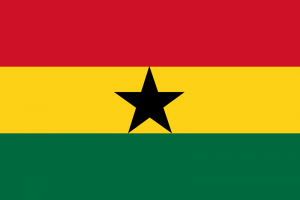Language/Twi/Grammar/Descriptive-Adjectives
What Are Adjectives?
In English, adjectives are words that describe or modify nouns and pronouns. In Twi, adjectives function in a similar way, helping to provide more information about the qualities, characteristics, and attributes of people, places, and things. For example, adjectives can be used to describe the color, size, shape, age, or origin of a noun, as well as to provide more specific details about its characteristics and qualities.
The Structure of Adjectives in Twi
In Twi, adjectives typically come before the noun they describe, similar to English. However, there are some differences in how adjectives are used and structured in Twi. The most important thing to remember about Twi adjectives is that they must agree with the noun they modify in terms of gender and number. This means that the adjective ending may change depending on whether it is modifying a masculine or feminine noun, as well as whether it is singular or plural.
Common Twi Adjectives
Below is a list of common Twi adjectives that are frequently used in everyday conversations. These adjectives are organized by their general category or meaning, and include examples of how they can be used to describe people, places, and things.
Colors
| Twi | Pronunciation | English |
|---|---|---|
| nsoromma | n-so-ro-ma | red |
| deɛ | dyeh | black |
| ahuma | a-hu-ma | white |
| nkutoo | n-koo-too | golden |
Sizes
| Twi | Pronunciation | English |
|---|---|---|
| kɔkɔɔ | ko-ko-oh | small |
| dwuma | doo-ma | big |
| awɔ | a-woh | tall |
| nkran | en-kran | short |
Shapes
| Twi | Pronunciation | English |
|---|---|---|
| anuonyam | a-noo-nyam | round |
| etsɛɛku | eh-tsuh-eh-koo | square |
| bim | beem | pointed |
Ages
| Twi | Pronunciation | English |
|---|---|---|
| susu | su-su | new |
| akonta | a-kon-ta | young |
| baako | bah-koh | old |
Origins
| Twi | Pronunciation | English |
|---|---|---|
| Akɔnɔm | ah-koh-nome | African |
| Akɔtɔ | ah-koh-toh | European |
| Akuaba | ah-kwah-bah | Asian |
| Akwantukese | ah-kwan-too-kay-seh | American |
Using Adjectives in Twi
When using adjectives in Twi, it is important to remember that they must agree in both gender and number with the noun they modify. For example, if the noun is masculine, the adjective must take a masculine form, and if the noun is plural, the adjective must also take a plural form. Here are a few examples:
- Obra deɛ yɛ ahoma - The work is black
- Abusuafoɔ bɛn deɛ yɛntie no? - What color are the shirts?
- Afia yɛ nkutoo a, na Kwame yɛ ahuma - If Afia is golden, then Kwame is white
As you can see from these examples, the adjective in Twi comes before the noun it modifies, and agrees in both gender and number. With practice, you will become more comfortable using adjectives in Twi and incorporating them into your conversations.
Conclusion
In this lesson, we have learned about Twi adjectives and their structure and usage. We have also explored some common Twi adjectives that are frequently used in everyday conversations, and practice using them to describe people, places, and things. To continue improving your Twi skills, be sure to practice using adjectives with different nouns, and try incorporating them into longer, more complex sentences.
Great work on completing this lesson! Take a moment to investigate these connected pages: Past Tense & Adjectives.
Other Lessons
- Gender
- Future Tense
- Give your Opinion
- Subject Verb Object Order
- Personal Pronouns
- Possessive Pronouns
- Questions and Negations
- Conditional Mood
- Adverbs of Time, Manner, and Place
- How to Use Be

